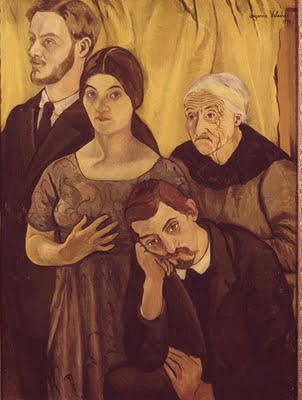The New Yorker article is very pro-Renoir. So much so that the author, Peter Schjeldahl, suggests there is something wrong with the character of those who do not like Renoir:
In the second class of people who like Renoir are those who have stopped fortifying their self-esteem with pride in their sophistication. You recall with indulgence, and may renew, the joys of your innocence. And liking what others like comes to seem more a happiness than a humiliation. Lord knows you’re lonesome enough in other respects.
Renoir painted very well when he cared to. (Ask any painter.) He did so in radical ways imported from outside academic convention—from his first profession, as a decorator of porcelain china. His style never forgets the charm of imagery glazed onto vessels. It’s true that his compositions tend to be slack. He was indifferent to the corners of rectangular canvases. It helps, when looking at his pictures, to imagine them as flattened convex surfaces.
Renoir’s popular appeal advanced the bourgeois cultural revolution that was Impressionism. He junked the aristocratic airs that linger in Degas and shrugged off the plein-air product lines of Monet. (They’re great, too, of course.) His art was from, for, and about the delights of an ascendant class. His exaggerated blush and sweetness make sense as effusions of triumphal exuberance.
Have the R.S.A.P. members ever truly looked at Renoir’s “Dance at Bougival” (1883) in the Boston M.F.A.? A raffish guy swings a lovely girl—Suzanne Valadon, the artist’s model and mistress, and later a distinguished painter herself—at a summertime outdoor café, redolent of heat, music, smells, and light sweats of exertion and desire. Cigarette butts litter the floor at their feet. This is no candy-box fantasy. It is the real life of real people in a real place, glorified. Modernity is dawning. There’s a beat to it, and a glow.
If you must hate yourself a little for loving Renoir, do so. You’ll get over it. And, when you think about it, who’s keeping score?
Who's keeping score? Apparently you are, Peter Schjeldahl.
But now that I am an official member of R.S.A.P., let me take his advice and truly look at Dance at Bougival, at least a digitized version. Schjeldahl notes that the woman portrayed is modeled on Suzanne Valadon. Here is a photo of Valadon two years after the Renoir was painted.
Quite a strong character even just sitting for her photo portrait. Here is how Renoir portrays her in Dance at Bougival. Valadon has been transformed into a pretty plump party girl, one of Renoir's generic boneless heifers.
Here is how Valadon was portrayed by Henri de Toulouse-Lautrec, also an Impressionist.
And if you think it's unfair comparing Valadon as a dancer to a Valadon portrait, here's a portrait by Renoir of Valadon.
Which portrait captures the essence of Valadon and which one says: "this is what pretty girls look like to me"? This is how Valadon portrayed herself, along with her 21-years-younger husband (on the left), her mother and her son.
To Renoir Valadon wasn't an individual, she was a pretty girl.
And it isn't just in portraiture that demonstrates Renoir was the least of all the Impressionists. Here is a dancer painted by Renoir, and another painted (in pastels) by Edgar Degas. If you can't see that Degas is the better draftsman, colorist, stylist and conveyer of humanity, well I don't know how you can't. Of course tastes vary, but then I don't claim that if you like Renoir it says something about your character.







